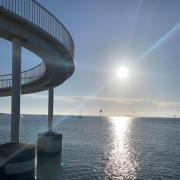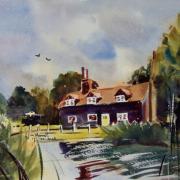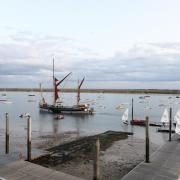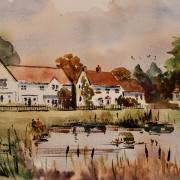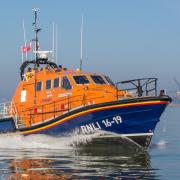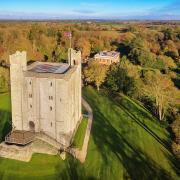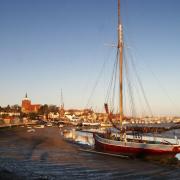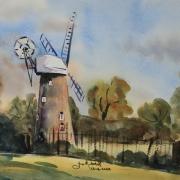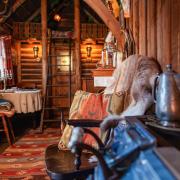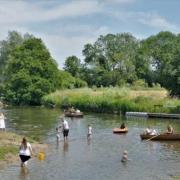We take a trip to the seaside to discover the stories behind Essex's famous piers
We can be thankful to our Victorian ancestors for many things, like getting away from the daily grind to have fun at the seaside. They gave us fish and chips to fill our bellies, sticks of sugary rock to crack our teeth on and the bucket and spade to make sandcastles on the beach. We still enjoy those things, but their great holiday invention was walking over the waves on a pleasure pier.
Visit any English coastal county and chances are you'll find at least one pier jutting out over the sand and sea. Essex is no exception, having three. People were attracted to the seaside in the 18th century, before the Victorian age, in the belief that sea air is good for health. Back then, holidaying at the coast was the preserve of the well-off.
Those well-to-do early holidaymakers began a tradition of walking on jetties that had been built for boats to dock at. They could breathe the freshest of air above the waves while doing a spot of people watching. Businessmen with a keen eye for a new opportunity realised that purpose-built piers with entertainment and refreshments could entice more visitors to the resort. Also, piers typically had a landing stage for paddle-steamers before the railway era made travel easier and affordable for more people.

Ryde, on the Isle of Wight, led the way when the world's first pleasure pier opened there in 1814. Southend-on-Sea joined in the early phase of pier building, opening its pier in 1830. The original wooden structure spanned 600ft, giving steamer passengers better access than via the usual method of a cart or rowing boat. Later it was twice extended to well over a mile in 1848, becoming Europe's longest.
Over time, it suffered the constant ravages of seawater and wooden piles can slowly lose their strength from marine worms boring into them. In 1875, the Southend Local Board bought the pier; its condition had deteriorated but was still safe. However, 12 years later work began on an iron replacement nearby. In 1890, this new pier officially opened to the public with the added attraction of Britain's first pier railway. The pier continued to be very popular, and on some days could be jam-packed with people.

Though England has dozens of surviving piers, many were also lost. Tiny sea creatures wearing away wooden piles, saltwater corroding iron piles, storms, fire and collisions from ships sealed the fate of several piers whose owners couldn't afford to repair or replace them.
Besides the unforgiving sea undermining the structures, wartime posed another risk to piers. Many were closed in the Second World War, either from being sectioned to prevent them being helpful to the enemy in the event of a German invasion, or for other reasons. Southend’s was fortunate to be taken over by the Royal Navy and renamed HMS Leigh. Sadly, having survived the war fairly intact, fires have been a recurring problem since the 1950s – the pavilion, pier head and bowling alley all lost to flames.

Tourists are the lifeblood of piers and Southend kept up with the times. In 2012, a modern architected cultural centre was put on the pier head, then officially renamed to The Royal Pavilion a year later. Ironically, the pier railway returned to its roots in 2021, its future harking back to the past as it was once again powered by electric. When it first opened in 1890, the trains were electric but later replaced by diesel engines.
Some distance away, near the border with Suffolk, another short landing pier opened in 1830 for cargo and passengers. At a stubby 150ft long, this one at Walton-on-the-Naze soon had to be extended. Thanks to increased damage from storms lashing it, the pier was eventually destroyed.
The Walton Pier we see today opened in 1898, and due to a lengthy span of half a mile, it too had an electric tramway installed. First used for ferrying passengers to the pier head, then later for pleasure rides, it was dismantled in the 1970s. What remains unique is the bend in the pier and the colourful yellow and red building on the shore end.

More than 40 years passed until Essex gained its third, and last, pier. Opened in 1871 at Clacton-on-Sea during the golden age of pier building, like those at Southend and Walton it first served as a landing stage and was popular for promenading. The Woolwich Steam Packet Company then added the town as a port of call for their steamships. The pier’s list of landing charges included eclectic items such as gunpowder and corpses!
While longer than some in England, Clacton Pier is the county's shortest at a little under 1200ft. Sixty years after opening it was widened considerably, and of all Essex’s piers it’s the best one for thrill-seekers. Crammed into the over-water funfair is a retro helter-skelter, rollercoaster, ferris wheel, dodgems and lots more.

What would a time-traveller from the Victorian era think of our modern piers? No doubt they'd notice the buildings lacking the ornamental style of their time and they'd marvel at the technologically advanced amusements. Perhaps they'd ask why no steamships can be seen puffing to and from the piers. The casual modern clothes would be a startling contrast to the stuffy formal wear of their days. When men can be seen wearing a hat nowadays, it's likely to be a cap and certainly not a bowler, and women don't wear long flowing skirts and carry umbrellas as a sunshade.
What hasn't changed is the chance to stroll over the waves and sit on a bench to take in the sea air and coastal views. Perhaps our time traveller would be surprised that piers remain an enduring fixture of the seaside holiday almost two centuries later.
Essex might boast the first pier railway at Southend, but it took ten years for it to win the Pier of the Year Award in 2007. Introduced in 1997 by the National Piers Society, this award was won by Clacton Pier in 2020. Fingers crossed that Walton Pier will eventually complete the hat trick for the county.





